1900-1940
Boom of 78 rpm
Local Industry
Long Playing
Special Issues
"Sounding Letters"
Envelopes
Listen Records
Guestbook
Radio Museum
SHELLAC DISK |
| Introduction 1900-1940 Boom of 78 rpm Local Industry Long Playing Special Issues "Sounding Letters" Envelopes Listen Records Guestbook Radio Museum |
|
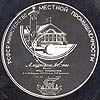 |
Big editions of plates were turned out by "Plastmass" artel (factory) on Sinopskaya (Kalashnikovskaya) embankment in Leningrad. You see two of the labels on disks of "grand" size produced by that factory in 1945-1949. The right label was printed in many versions of the topic, some of them are shown here. |
 |
 |
In late 1950s the factory was resubordinated to the Head Management of Local Industry and acquired stable logotypes both for "grand" plates (left) and "mignons" (right). |
 |
 |
Another larger enterprise was the disk works at Krasnoye Selo near Leningrad (the pre-war "Gramplastmass" artel). You can see two samples of the factory's labels dating 1938-1940. |
 |
 |
Left - a post-war label of Krasnoselsky Works. Right - a label of early 1950s disks. It is known in 4 versions (placed here). |
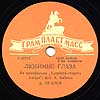 |
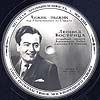 |
1954. A plate of a very popular variety singer of those days - Leonid Kostritsa (Moskvoretsky District Works). Right - reverse side. |
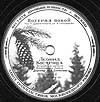 |
 |
Plastics Factory No. 1 of "Mosgorplastmass" Trust was another Moscow enterprise producing gramophone disks. The label shows a photo of Raisa Zhemchuzhnaya - a well-known performer of Gypsy romances. |
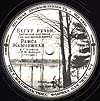 |